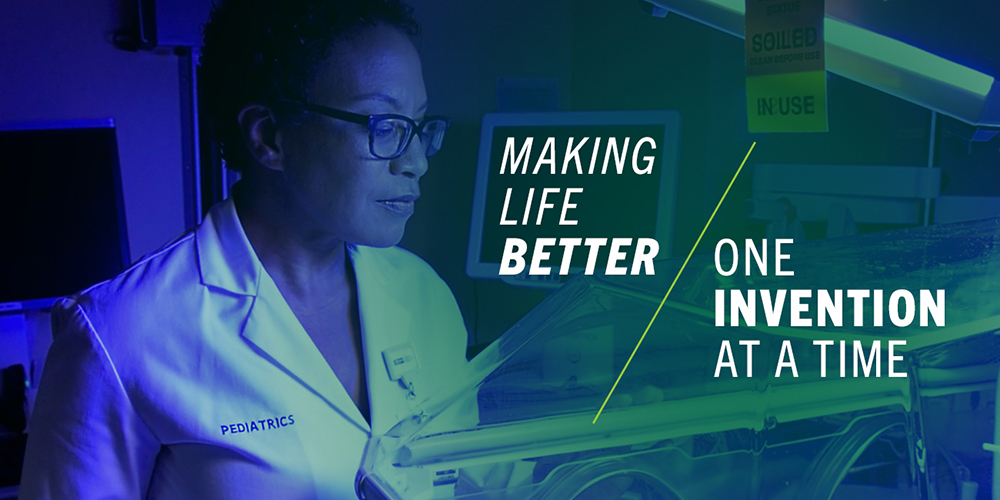The University of South Florida remains one of the top universities in the nation for producing new U.S. utility patents, according to a new ranking released this week by the National Academy of Inventors.
Based on the 84 new patents secured during the 2022 calendar year, USF is 15th among American public research universities and 36th among all universities worldwide in generating new patents. This marks the 10th year USF has ranked in the top 15 among American public universities.
“This important recognition is a testament to the University of South Florida’s innovative faculty members and their focus on staying at the forefront of new discoveries,” USF President Rhea Law said. “A key part of our mission at USF is to continue leading groundbreaking research that solves global problems, improves lives and creates a healthier future for our communities.”
The ranking places USF in rare company among the academic institutions generating new, novel and useful inventions—including innovation powerhouses such as the University of California System, Massachusetts Institute of Technology, Harvard University and Stanford University. Combined, the three universities that comprise the Florida High Tech Corridor—USF, the University of Florida and the University of Central Florida—secured 286 patents. This puts The Corridor ahead of nationally recognized centers of innovation, including North Carolina’s Research Triangle and the University of Texas System.
The Top 100 Worldwide Universities Granted U.S. Utility Patents in 2022 report from the National Academy of Inventors uses data from the U.S. Patent and Trademark Office in the previous calendar year and highlights the vital role patents play in not only university research and innovation, but in the global knowledge economy. The full report can be found here.
Here are some of the highlights of USF’s 2022 patents:
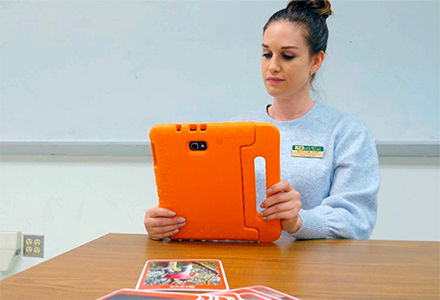
Sara Smith is the creator of the Multimedia Augmented Reality Vocabulary Learning (MARVL) application, which uses technology and research-based best practices to support learning vocabulary in a new language.
Smith is an assistant professor in USF’s ESOL and Foreign Language Education and Faculty in the Technology in Education and Second Language Acquisition doctoral program.
After experiencing classroom environments with more than 18 different languages spoken by her students, Smith developed an application that aims to improve vocabulary instruction for English language learners and dual-language learners.
The MARVL app allows children to complete their English vocabulary learning on their own, while also reinforcing their knowledge of words in their home language.
“MARVL uses that excitement and fun of augmented reality to build on traditional vocabulary flashcard methods,” Smith said. “We know that the best way for kids to learn a new word is when they get a definition in their first language. So, MARVL is really here to create a resource for teachers so they could provide that dual-language support.”
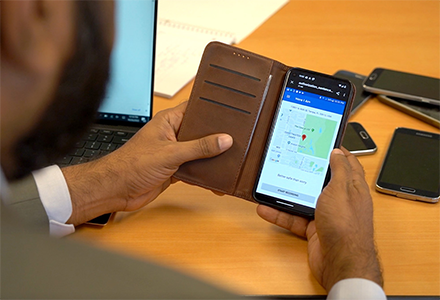
New USF patent creates digital alibis
This security technology is the first of its kind to create and verify an unforgeable alibi. The patented technology, dubbed "Here I am," can more accurately confirm an individual’s identity and location using their voice. It works by creating an unforgeable, encrypted digital certificate on a user’s cellular device.
The certificate is permanently verifiable and can be used for authentication in a variety of scenarios, such as improving employee accountability, as well as protection for victims of domestic abuse and criminal justice. The goal is to license the technology directly to telecom providers that utilize location data. The providers can then offer it to companies to integrate into their own apps, such as ride-sharing services, helping them better protect drivers and passengers.
USF computer science and engineering Professor Sriram Chellappan spent several years brainstorming inventions to protect people from being wrongly accused of crimes. In 2018, he teamed up with Balaji Padmanabhan, USF professor of information systems and management, to create the app.
“When law enforcement is investigating a crime, it is very common for those who are detained to be unable to generate verifiable alibis and that becomes a critical liability,” Chellappan said. “They can’t return to work, may lose their job and as a result, lose their income. I thought there must be a way to fix this and prove people’s true location, when needed.”
Although devices can easily be tracked, confirming the identity of the person operating the device during that tracking is more difficult, especially after several years have passed. The team concluded the most efficient way to overcome this hurdle would be to combine a person’s voice with the location, date and time—a foolproof way for someone to prove they were at a specific place at a certain time.
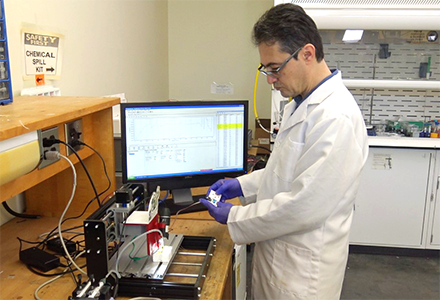
Two electrical engineering professors at USF receive patent and NSF grant for wearable technology
Wearable electronics are becoming increasingly common, with clothing wired to connect to a range of devices, such as headphones nestled inside a hat. Expanding on previous work in this area that resulted in a patent approved in 2022, USF electrical engineering Associate Professor Arash Takshi and USF Research & Innovation Interim Vice President and Professor Sylvia Thomas are using a novel electrochemical method to print copper directly on fabric.
The type of technology that can be embedded into fabric is limited only by the imagination, and Takshi sees his invention as primarily beneficial in several sectors—health, military and personal performance monitors. Smart suits can be designed for military personnel and astronauts with distributed sensors interconnected using this new technology. Smart suits can also be designed for monitoring a patient’s health status and the physical activities of athletes.
With a $369,574 grant from the National Science Foundation, the project is taking wearable electronics to a whole other level.
In the devised method, invented by Takshi and his former doctoral student, Sabrina Rosa-Ortiz, a few volts are applied for growing copper. The relatively larger voltage, still in the range of 2-3 V, results in water electrolysis at the same time that copper grows.
Thomas, the project’s co-principal investigator, said that the resulting invention has the potential to change the entire production pipeline of wearable electronics. “This technology stands to further advance the way we envision wearable electronics, textile electronics and flexible electronics as we know them today—from lab to innovation to product,” she said.
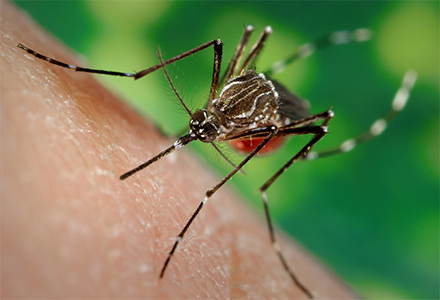
Global dashboard for tracking invasive mosquitoes carrying deadly diseases
To combat the ongoing threat of mosquito-borne diseases worldwide, USF researchers have invented a technique to leverage smartphone cameras and image processing to classify mosquito species. With funding from the National Science Foundation, computer science and engineering Professor Sriram Chellappan and integrative biology Assistant Professor Ryan Carney created the Global Mosquito Observations Dashboard to surveil mosquito-borne diseases with automated mosquito identification.
Mosquito-borne diseases continue to pose grave dangers to global health. An important step in combating their spread in any area is to identify the type of species prevalent there. To do so, trained personnel lay local mosquito traps, and after collecting trapped specimens, they visually inspect each specimen to identify the species type and log their counts. Using that process takes hours and is cognitively very demanding.
However, this smartphone-based system allows anyone to take images of a still mosquito that is either alive or dead and automatically classify the species type. This new system integrates image processing, feature selection, unsupervised clustering and a machine learning algorithm for classification. Also, ordinary citizens can use this system in their own homes for self-awareness and information sharing with public health agencies.
